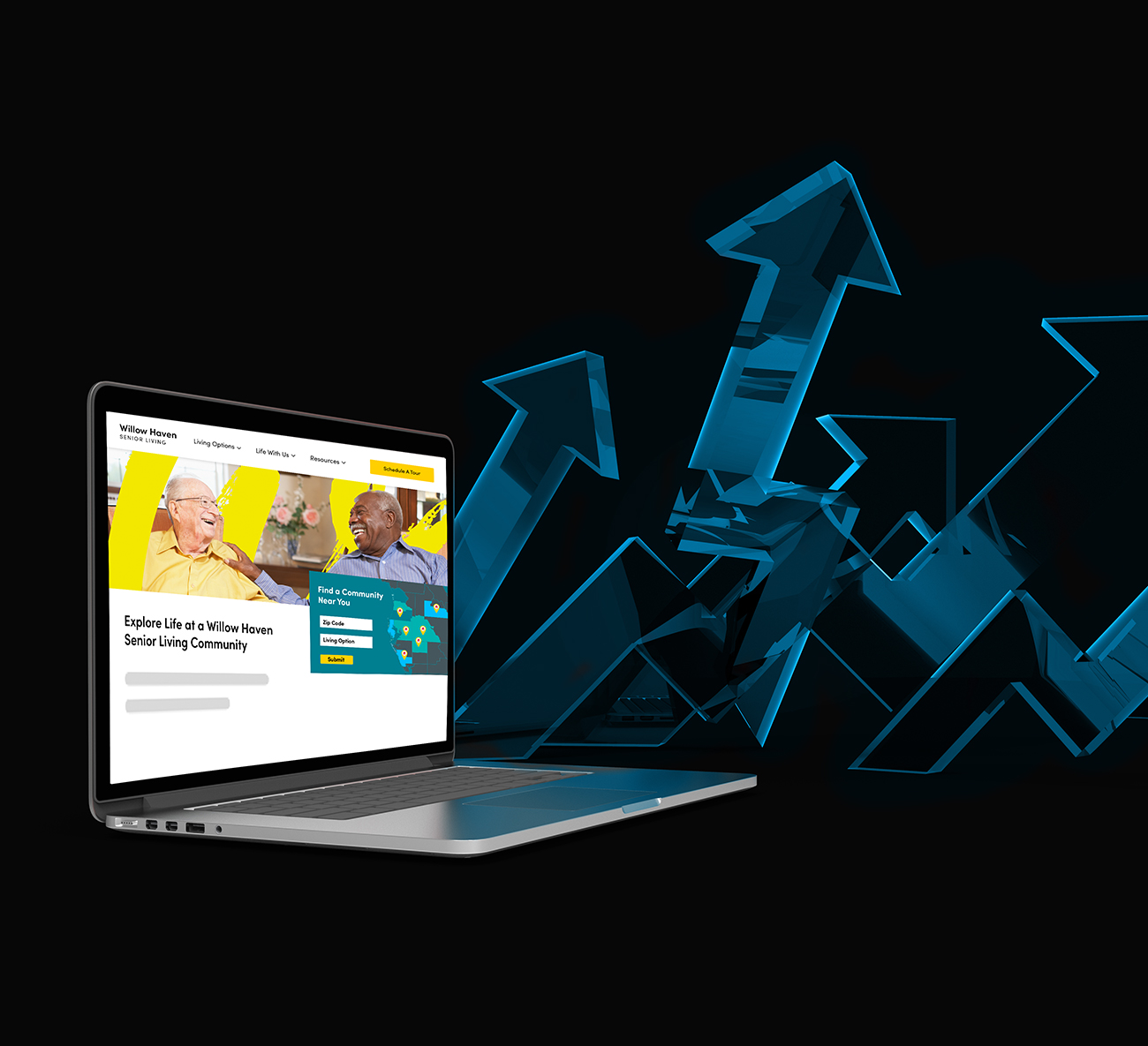It’s been said that if you want to increase revenue, you must do at least one of the following:
- Get more customers
- Increase revenue from each transaction
- Increase the number of transactions
- Raise your prices
Let’s look at each of these strategies to determine which are feasible and which are not.
Strategy A: Get more customers
If you’re part of an internal sales and marketing team, you’re already always doing this. It is part of your daily routine. But it’s not that easy. In fact, it’s hard.
After determining the prospective clients who fit your profile, depending on what you’re selling, the length of your sales cycle, and what your acquisition costs are, this is certainly the end-goal, but definitely not a quick fix.
Your sales team, in close collaboration with your marketing team, are presumably working super hard to win new business and if your winning percentage is not acceptable, we’ve tackled that subject.
Strategy B: Increase revenue from each transaction
Certainly, there are ways to justify a price hike. These include the end of an introductory offer, an increase in materials and other costs, supply and demand, or a change in scope that precipitates additional charges. If your product or service is conducive to upselling, this is always a win-win, as it usually is in response to a client’s statement of a particular pain point.
If your clients are used to paying a certain amount and suddenly, it’s going to cost them more, no doubt you’ll prepare a proper justification and explain the reasons. If you’re pitching new business, you’ll simply use a higher pricing model.
This is likely to be a slow-go tactic, but if you are a low-cost option in your market, research your competition’s pricing and gradually increase your take per transaction, always presenting the business case, of course.
Strategy C: Increase the number of transactions
The only way this will work is if you can get more work out of your current crew.
Not a problem if you have excess capacity, but if your team is already stretched, more work will exacerbate the problem and you may lose valuable talent, unless you pay them more, and then your profit margin will actually stay the same, and that was not the original intent.
However, this really is your best strategy and the way to grow intelligently. If you choose to increase the number of transactions, an in-depth assessment of your team’s talents will help you understand what you can offer your clients, based on their threshold level.
It’s always smart to stretch your team, investing in their continuing education to grow their talents, also making cross-training a very viable option.
By auditing your processes, the team will become leaner, time to completion will have to be shortened (because the longer a project is in-house, the smaller your profit margin). A bullet-proof quality assurance process can reduce the number of revision rounds, while you successfully manage an increase in the number of transactions.
For most marketing organizations, it’s getting harder every day to be able to offer everything to your clients and customers. Audience segmentation, personas, the complexities of social-media marketing, and dynamic messaging are just a few of the marketing tactics you either need to have in your repertoire or available to you through a solid partner relationship.
Strategy D: Raise your prices
This is by far, the toughest one to manage. Once in a while, a cost-of-living increase can be explained, but the value proposition must be equally compelling or this strategy will fall flat on its face.

Raising your prices must be done very strategically, thoughtfully and carefully.
SO WHAT DO YOU DO?
Dissect your options
Because two of the strategies involve raising your prices, and that usually doesn’t sit well with current clients, your best bet is to do better with what you already have. Work smarter and more efficiently, and you should be able to handle more work without losing your entire team. (If you are bringing in new clients, you may be able to raise your rates a bit at the outset, but only if you also can remain competitive.) Doing more with less is a strategy that wins every time. An empowered team will come up with ideas for better efficiency, since they are in the trenches and have the best view of issues and solutions. No doubt you have a mechanism for efficiency improvement suggestions. Assuming they are sound, do them all. How can you do it all without actually doing it all? What’s the best way to evaluate your options and determine the best solution for your current situation?
Increase revenue by managing resources
When considering the most expedient ways to manage your marketing department’s goals based on budgets, time and resources, there are four key elements to consider:
- Internal resources available and allocated
- Team skills improvement, including continuing education and cross-functional training
- Partner companies who can supplement and complement your internal resources and talents
- Budget restrictions, especially if reasonably limited
Element #1: Resource management
Most experts believe that a decentralized workforce is the key to success, as this will provide the best adaptability, flexibility and speed to get a plan developed and executed. Beyond your core crew, what items can be contracted to a company that specializes in that particular discipline?
Recently, HubSpot VP Scott Brinker, in his Discover MarTech keynote, emphasized that the time to decentralize is now. Referring to the cataclysmic shift COVID has brought, “It’s been really fascinating to see how companies that had the ability to decentralize could adapt to this new environment.”
In a June 2020 MarTech Today article, Amy Gesenhues concurs. “Being able to keep consistent work processes and practices are key to adopting an agile approach, but it’s difficult when every project is a priority.”
Element #2: Education and cross-training
You can “grow your own,” but this takes time. To make this work, you need to change the potential of the human beings in the organization, pushing people to their highest potential, because on the whole, it is generally believed that companies underutilize their people’s talents.
At that same Discover MarTech event, Michael Shattuck, director of customer success at digital content software company, Widen, noted that “digital transformation is not about digitizing your business, but about changing the potential of the human beings in your organization.”
Also referring to our new world circumstance, Shattuck noted that it’s often a crisis that pushes people to their highest potential and that companies need to look at all the ways they may have been under-utilizing people’s talents. “Ultimately, it’s about the people.”

Element #3: Partners and outsourcing
This is the most expedient strategy, and profitable if you can increase your revenue beyond the cost of outsourcing and also provide outstanding value to your clients. If you only outsource the hard parts – the functions that you are sure you do not have within your organization – you can up your game considerably.
“Businesses undergoing digital transformation don’t want to have to navigate disparate network agencies,” said CEO of Brainlabs Daniel Gilbert, in a recent MarTech Today article. “They want access to broad functional expertise with a unified strategy and a single point of contact.”
Gilbert’s agency has recently acquired two firms – Distilled and Hanapin – building out its own team to better serve clients’ digital transformation needs. He and Josh Campo, president of Razorfish, both said clients do not necessarily come to their agencies looking specifically for help with digital transformation, but instead, are looking for support in other areas.
“Generally, we see a point of engagement that is around a problem, and then, depending on how far in we go, you start to see an opportunity to really drive transformation,” said Campo.
Element #4: Smart budget management
Marketing budgets have been tossed upside down this year and they’re not likely to recover any time soon, so it’s imperative that every marketing budget be optimized to the max. If you’re a CMO, tasked with all the usual stuff and now also sales, it can tend to be overwhelming.
As there is generally no time to waste when budget optimization is the end-goal, a specialist often is the key ingredient for success. Digital agencies really can spend media budgets much more wisely as they are completely and thoroughly tuned into that entire world.
SO WHAT DO YOU DO?
Remove roadblocks
According to a recent study conducted by the Content Marketing Institute, internal marketers lag behind, due to a number of roadblocks, including:
- Misaligned departmental goals
- Executive politics
- The “dreaded” knowledge silos
Misaligned goals result in unrealistic expectations and disappointment. No doubt you feel that your internal department should be able to do everything, and if they can, that’s great. But it’s likely not true.

Executive politics is a game that can only be won if you’re effectively playing a numbers game. When you have good data, and can validate your department’s worth, it’s easier to lobby for money to further educate your crew, because you can prove ROI.
Alas, the dreaded knowledge silos have just gotta go. They are a remnant from a bygone era of doing business, when people held special knowledge close to the vest in order to protect job security.
Thank heaven those days are gone. If you still have silos in your organization, you must adopt a posture of knowledge sharing, as this is the more consistently winning position.
Marketing doesn’t have to be a juggling act
While it may sometimes seem impossible to manage people, goals, priorities, upper management, clients, budgets, resources and deadlines all at once, by making the most of what you’ve got, you’ll at least have a fighting chance.
Intelligent resource allocation and management is the key to keeping everyone sane, keeping your profit margins high and providing a reasonable return on investment.
By creating an environment of constant change and progress, internal teams, along with trusted partners can pull off the most efficient and effective result, adding a new dimension to your business and upping your game in the process.










